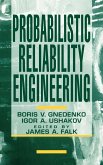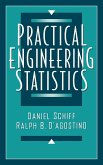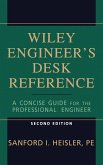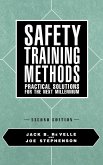Originally published in the USSR, Handbook of Reliability Engineering set the standard for the reliability testing of technical systems for nearly three generations of applied scientists and engineers. Authored by a group of prominent Soviet specialists in reliability, it provided professionals and students with the first comprehensive reference covering mathematical formulas and techniques for incorporating reliability into engineering designs and testing procedures for nearly three decades. Now, the Handbook's Russian editor, an internationally recognized reliability expert in his own right, has joined forces with a prominent American engineering professional to bring this indispensable resource to English-speaking audiences. Divided into three major parts, the Handbook details reliability fundamentals, examines common reliability problems and solutions, provides a collection of computation formulas and illustrates practical applications of the methods discussed in twenty-four self-contained chapters. Part One, Probabilistic Reliability, discusses equipment, renewable systems, repairable dual systems, asymptotic methods for very reliable repairable systems, systems with network structures, evaluation of system effectiveness, systems with time redundancy, queuing systems with unreliable service channels, and mechanical equipment. In Part Two, Statistical Reliability, the authors discuss estimation of equipment reliability from tests, acceptance-rejection tests, system confidence limits based on unit tests, acceptance-rejection test plans for complex systems, Bayesian reliability estimation, accelerated tests, reliability growth and Monte Carlo simulations. Part Three, Optimization, offers detailed coverage of optimal redundancy, optimal supply of spare parts, optimal control of inventories of spare parts, optimal maintenance, and optimal technical diagnosis. Each topic is introduced using simple, numerical examples readers can follow step-by-step. Appendices offer a review of probability, stochastic processes and mathematical statistics, standard mathematical formulas used in reliability, useful numerical tables as well as information about where readers can purchase reliability software to apply to their own work in engineering design, life prediction, and more. As reliability theory strengthens its already strong position in modern engineering, the Handbook of Reliability Engineering will continue to provide engineers, statisticians, operations research professionals, and students with one of the most comprehensive treatments of reliability topics in print.








